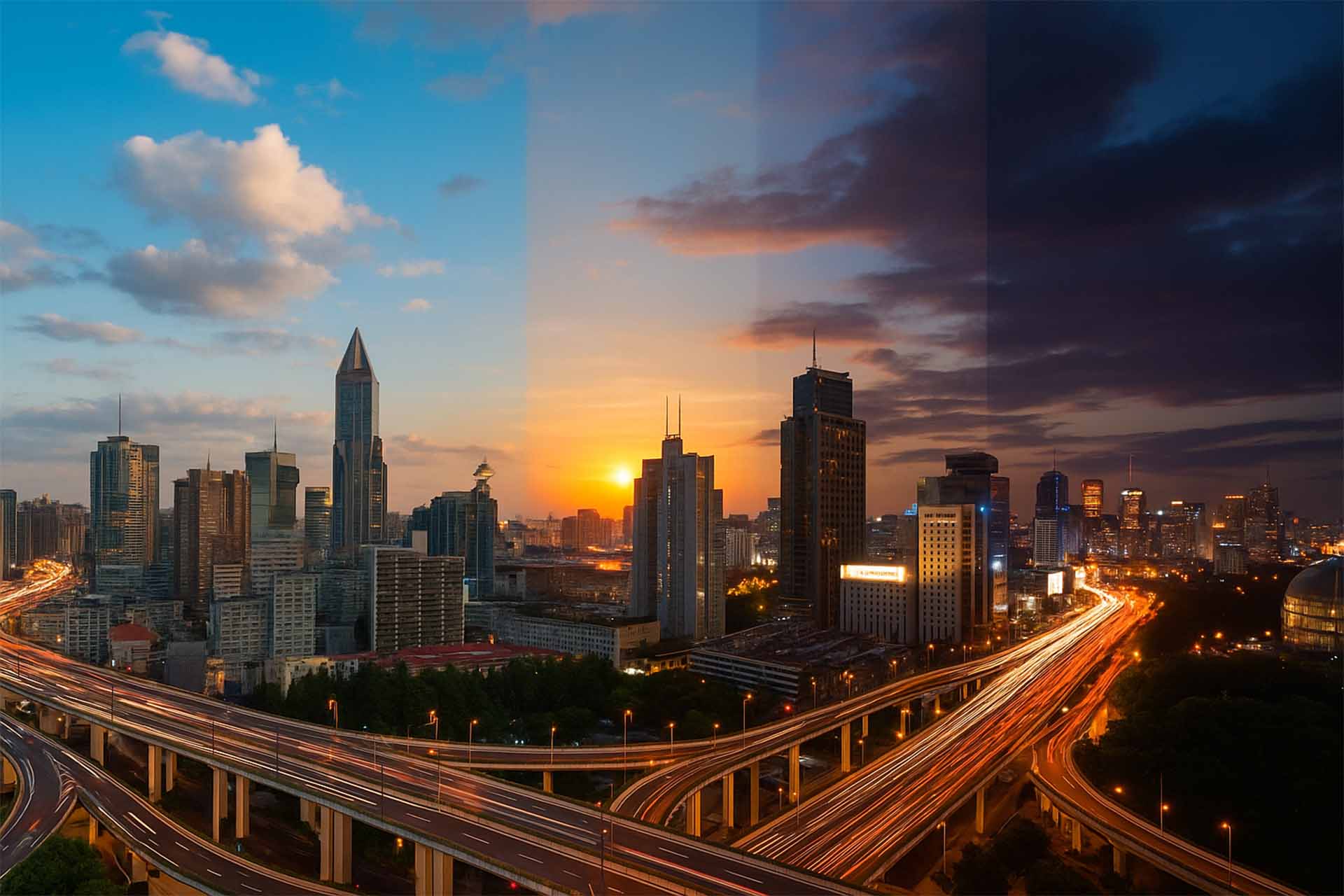
The Power of Time-Lapse: How to Compress Time to Tell Stories of Growth
Have you ever wondered how just a few seconds of footage can reveal the building of a city, the blooming of a flower, or the movement of clouds across the sky?
That’s the magic of Time-Lapse — a visual storytelling technique that allows us to compress time and witness transformation in motion.
At Loop Media, we use Time-Lapse not merely as a visual trick, but as a storytelling language — one that unveils change, progress, and beauty in ways the human eye cannot perceive in real time.
What Is Time-Lapse and How Does It Work?
Time-Lapse is a filming technique that captures frames at set intervals and plays them back rapidly.
This acceleration reveals slow processes — such as construction, nature’s cycles, or human activity — in a visually captivating way that communicates progress, effort, and transformation.
Why Time-Lapse Is a Powerful Storytelling Tool
1️⃣ Revealing Slow Processes
Time-Lapse transforms slow-moving events into fast, engaging sequences — for example:
- A plant sprouting from a seed and unfolding its petals.
- Clouds drifting and reshaping across the sky.
- The rise of a skyscraper from foundation to completion.
2️⃣ Showing Transformation Over Time
By compressing hours, days, or even years into seconds, Time-Lapse captures evolution — from sunrise to sunset, or from untouched land to bustling cityscape.
It turns time itself into the main character of your visual story.
3️⃣ Adding Drama and Emotion
Beyond documentation, Time-Lapse injects rhythm and emotion into visuals.
Watching the world change before your eyes evokes a sense of wonder — transforming an ordinary process into an extraordinary experience.
4️⃣ Simplifying Complex Stories
Documentaries, brand videos, and architectural showcases use Time-Lapse to summarize lengthy periods visually.
It’s an elegant way to communicate effort, growth, or creativity without lengthy explanations.
Stories Best Told with Time-Lapse
Nature and Biological Growth
From the unfolding of a flower to shifting sands and melting glaciers, Time-Lapse reveals the hidden pace of nature — letting us see life’s quiet rhythm in fast-forward.
Urban and Architectural Development
In cityscapes, Time-Lapse captures the heartbeat of progress — construction cranes, traffic flows, and glowing windows that define modern life.
At Loop Media, we use it to showcase architectural milestones and the dynamic energy of human achievement.
Personal and Human Transformation
From a newborn growing into an adult to a small business evolving into a thriving brand, Time-Lapse can illustrate personal journeys and emotional milestones with incredible impact.
Loop Media’s Vision: Seeing Time Differently
At Loop Media, we believe Time-Lapse is not about speeding up reality — it’s about revealing it. By merging art and technology, we transform time into emotion and motion, crafting visuals that connect deeply with audiences and leave a lasting impression.
Loop Media Tip
When planning your next visual project — be it a film, ad, or documentary — think of time as your storytelling partner. A well-crafted Time-Lapse doesn’t just show transformation; it makes your audience feel it.
 العربية
العربية


